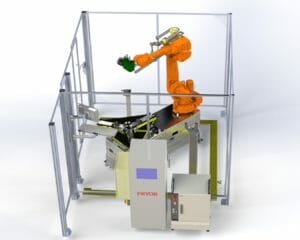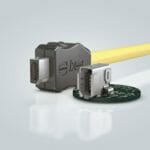The robotic marking of components is vital to ensuring that they can be traced at all steps along the aerospace supply chain. Dan Stephenson, sales manager at Pryor Marking Technology, explains why.
The marking of parts is critical in the aerospace industry and, in many cases, mandatory. Specifications such as the UID standards laid down by the US Department of Defence and SAE International’s AS9132 marking standard stipulate that parts be marked permanently in order to give them a unique identity. This is done by applying a Data Matrix code (similar to a barcode) to the surface of parts.
The code serves as a passport for the component and by scanning it, a manufacturer can access a myriad of data regarding its production – including the supplier of the material from which it is made and the production operative responsible for its manufacture. If the part fails, this data can help to determine the reason(s) why.
Some parts can be marked adequately using hand-held devices, but large parts may need to be marked multiple times in exact locations. With some engine components worth more than £100,000 each, the incorrect application of a mark can be an expensive mistake to make. With this in mind, a precise marking technique, such as robotic control, is needed.
Using Pryor Marking Technology’s multi-axis robotic systems, a large part is moved into a marking cell where it is loaded onto a rotary table and clamped in place. An operator scans the part’s unique identification code, which calls up a programme with marking instructions. These are carried out by a robot-mounted marking head. The whole process is controlled by Pryor’s software, which is linked to the manufacturer’s plant production system to ensure that the correct data is applied.
A key element of the technology is the vision system, which helps to validate and verify all of the marks. It checks that the marked information is correct and that it meets the relevant specifications. It can also help to ensure that the positioning of the mark is correct. While this information will be loaded as part of the marking programme, a mark may have to be made in a position relative to a certain feature on a component. The camera can find this feature and apply an offset to the marking programme as a further check to ensure correct placement.
Robotic marking systems are generally used on round and cylindrical aeroengine components of up to 1.2m in diameter – although larger parts could be handled if required. As such parts become more commonplace, the need to track them will become increasingly important.
For more information, please contact Pryor Marking on 01142 766044, email: [email protected] or visit https://www.pryormarking.com/






